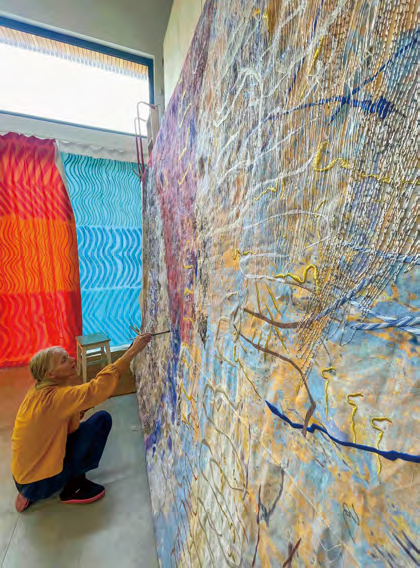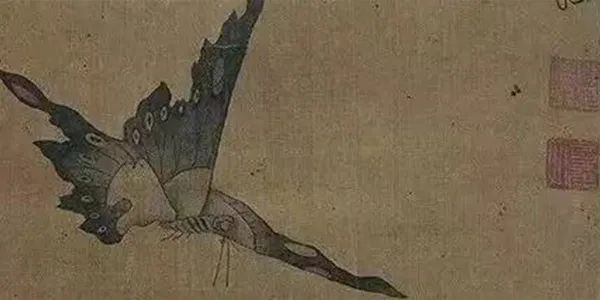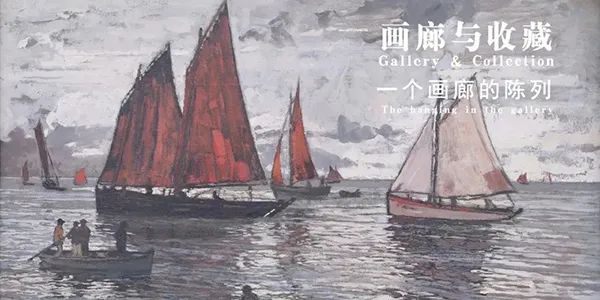第四届杭州纤维艺术三年展“缓存在/Being Theoria”于10月18日在浙江美术馆开展,来自全球十数个国家的60余名参展艺术家/团体的近百件杰作向公众全面开放。国美学术通讯特推出海外参展艺术家访谈系列,带您走近艺术家的创作空间和思想世界。
本次参展的英国艺术家爱丽丝·凯特以其先驱般的艺术形式而闻名国际,其独特性体现在作品用途和创作工序上。她的作品突破了界限,具有当代性,作品主题唤起了人们对生活世界的深刻理解。爱丽丝·凯特从神话和故事中汲取灵感,在她缝制的故事作品中呈现当代事件和人生经历。她参考了具象纺织品的历史、重要叙事性的壁挂作品、当下事件及相关媒体报道。借助这些故事,她讲述了她的个人遭遇、转变经历,成长、更新、变化、衰败的持续过程,以及悲剧与希望的对立。她的艺术创作体现了她眼中人类与自然、世界和彼此的关系。
“我们作为有形的存在,是物质世界的一部分,”她说,“我们都处于关系生成的循环中。”

爱丽丝·凯特
Alice Kettle
英国 UK

爱丽丝·凯特是曼彻斯特城市大学艺术学院的纺织艺术教授,在英国和国际的公开展览和私人藏品中都有她的作品。她由坎迪达·史蒂文斯画廊代理。凯特曾在雷丁大学学习美术,认识了当代画家中的一些泰斗,特里·弗罗斯特、玛丽·莫瑞斯和埃尔伯特·艾尔文都是她的导师。她的标记方法、色彩运用和线条力量都折射出这些画家的影子。
She is currently a professor in Textile Arts at Manchester School of Art, Manchester Metropolitan University with her work represented in a wide range of British and international public and private collections. She is represented by Candida Stevens gallery. Her fine art training at the University of Reading, links her to an influential generation of contemporary painters including Terry Frost, Mali Morris and Albert Irvin, all of whom were her tutors. You can see the legacy of their work present in her mark-making, colour and energy of line.

Q
您好,可以谈谈您对杭州纤维艺术三年展的理解和看法吗?
Would you mind sharing us your views and opinions about the 2022 Hangzhou Triennial of Fiber Art?
A

非常高兴能够受邀参加本届展览,我对历届展览也有较为深入的了解。杭州纤三展在纤维艺术领域的重要性不言而喻,它在前沿创新作品展示、大型展览策展布展、跨国艺术家群体交流等层面影响力巨大。另外,纤三展正积极地改变着大众对于纺织品的传统概念,表达了纤维艺术想要跳出固有定义的决心。当然,我也不同意局限在其中进行艺术创作。这些雄心勃勃、规模宏大的展览以及背后的故事不但给予了我们艺术上的关切,也围绕某些关键主题进行了多种艺术实践。这些都对纤维艺术的发展起到了重要和显著的促进作用。
I was very delighted to be invited and I’ve been very aware of the previous triennials, very important in terms of the calendar of textile programming, and it has been highly influential in showcasing very innovative work, ambitious scale, and artists who work internationally, so it’s positive, and in raising the consciousness of textiles, which of course has a sense of being slightly outside of the final word. And of course, that’s a fuss to work within it, I disagree with that. But these ambitious and really extraordinarily grand-in-scale exhibitions, triennials, and all the writing behind them have brought us artistic attention but also explored important themes and different types of practices, so they are very significant, important, and furthering the activities in textile.

Q
请您介绍一下本届杭州纤维艺术三年展您带来的作品和您创作这些作品时的灵感源自哪里?以及您想通过这些作品向参观者传达什么样的内涵和思想?
Is it possible for you to tell us what artworks did you bring to 2022 Hangzhou Triennial of Fiber Art? Where did your inspiration come from when you were creating these artworks? Could you tell us about the messages and ideas you try to convey to the audience through these artworks?
A

我正在本届杭州纤维艺术三年展展出的作品共有三件,它们某种程度上都是彼此联系的。最大、也是最重要的这件,叫作《飞行路线》。这是一件覆盖了整个墙面的刺绣作品。它和第二件作品中的气球相关联。它们实际关注的都是“联结”相关的观念。我一直认为,缝纫和织物是“联结”的具象化体现,因为缝纫让物与物彼此相连。从概念上讲,这就是本作品的基础创作理念。它展现了随着载人飞行频次激增,我们得以通过旅行在陌生文化场所获得现实的体验。我也曾有幸到过中国杭州,参观过那里的丝绸博物馆。与此同时,它也让我们对自身有了某种觉知,使我们对自己在文化层面有了更深的理解,无论是那些在我们身边的文化、地方性的文化,还是相对遥远的文化。因此,《飞行路线》坦白了一个这样的世界:在这个鲜少出行的疫情时期,我们被更多地“固定”在了自己的家乡和当地环境之中。它也告知了我们飞行次数减少所带来的影响——我们和当地环境间的关系更趋密切。

《飞行路线》 / 布面印染、刺绣、棉线、金属丝线、人造丝线等多种丝线 269 cm × 7.2 cm× 804 cm /2022
Flight Lines / Print on cloth, with embroidery, various threads, cotton, metallic, rayon
爱丽丝·凯特 Alice Kettle
展于第四届杭州纤维艺术三年展
Exhibited at the 4th Hangzhou Triennial of Fiber Art
它还表达了一些关于气候变化的东西,比如航班过多对环境造成的破坏。这也是当代我们正面临的挑战。作为一个国际社会,我们需要了解应该如何重新配置生活方式,以及如何维持全球联系,避免对环境造成永久性和灾难性的破坏。该作品还呈现了自然界中一群鸟儿从一个方向飞向另一个方向,而一队航班与它们相向而行。这是关于迁徙的议题。它讲述了通过迁徙我们得以接触其他文化、其他地域,但另一方面也承认迁徙之间以及迁徙过程中存在的紧张关系,期间发生的缝合和破坏,以及自然、非人类和人类主体之间所重新构建的平衡。这是该作品主要想表达的内容。


《月亮》/ 合成织物、木制和塑料固定件、塑料充气(展览前将注入氦气)半径约 3 米的球体 / 2018 年
Moon / Synthetic fabric, wood and plastic fixings, plastic inflation pipe (to be filled with helium on site at installation) / Approx. 3m radius and depth once inflated / 2018
爱丽丝·凯特 Alice Kettle
展于第四届杭州纤维艺术三年展
Exhibited at the 4th Hangzhou Triennial of Fiber Art
还有第二件作品中的气球,捕捉大气的容器。它表明了织物是生活、移动及非真空空间的必然组成部分。因此,刺绣作品中蕴含着坚实和永恒,它唤起了某种东西,然后将其运动和迁徙的轨迹加以呈现。它提到了纺织品的迁徙、语言中的迁徙,以及文字和织物的联系。但它是实在的、物理意义上存在的物质,一件坚固的作品,而气球则更多是用来捕捉空气的流动,它能够上升,成为气流和气流变化的一部分。但它仍旧扎根于纤维艺术实践。这就是两件作品之间的对话:谈论气候的脆弱,我们如何在这个世界里实现平衡。

特别项目:《缝一棵树》/ 棉和各类由线、棉、金属和嫘萦制成的织物
Special Project: Stitch a Tree / Cotton and various fabrics with various threads, cotton, metal and rayon
爱丽丝·凯特 Alice Kettle
展于第四届杭州纤维艺术三年展
Exhibited at the 4th Hangzhou Triennial of Fiber Art
还有另外一件作品,《缝一棵树》。这件作品的核心思想还是环保主义,蕴含着人类与自然世界之间的平衡。它是通过合作参与进行创作的,每棵树都由不同的人缝制,从这个角度讲它是个体的,但同时它也是集体的,因为树木共同构成了一片森林。它传达了这样的思想:我们都是一个社区的一部分,是这种世界“联结”的一部分。关联和用以联结的线条定义了我们,允许我们进化、发展,但也赋予我们责任。我们必须保持警惕,准备好面对这些挑战。
The artworks that I have been and am showing at the triennial. There are three pieces, they are all interlinked to some extent. The major embroidery, which is the most substantial piece, is called “flight lines”. And this is the piece of work that is stitched across the whole surface. And it links to a balloon with the second piece, which I will come to the second. And really they are looking at, Ummm, the called “flight lines” looks at notions of connectivity. I always think that stitch and textiles embodied these ideas of connections because through stitching we join one thing to another. So conceptually, this is a really kind of underpinning idea of this work. It portrays the proliferation of manned flight and which allows us to open access to other cultural site experiences in travel. And I’ve been very fortunate in coming to China, so I’ve seen the Silk Museum, but also it allows us to kind of have a certain sense of ourselves. We have a more understanding of our own cultural aspects: what is near, and what is indicative, but also what is far. So “flight lines” came through this period of lack of travel in a world we are much more kind of positioned in our hometown and local environment through the pandemic. And understanding how the impact of these flights, the regression of these flights, made us have a more close affinity to our local environment.

《飞行路线》 Flight Lines
爱丽丝·凯特 Alice Kettle
展于第四届杭州纤维艺术三年展
Exhibited at the 4th Hangzhou Triennial of Fiber Art
It also portrays something about climate change, because the many flights have created environmental damage. And this is something that we have a challenge for the contemporary moment. As a global community, we need to understand how we reconfigure our ways of living and our ways of maintaining these global connections without damaging and creating permanent and disastrous damage to the environment. The work also references the natural world that a flock of birds flying across from ones in one direction and flights of aeroplanes going in the other way. It’s about migration, that is the idea of migration we have access that we experience other cultures, other places, but it also acknowledges the tension between migration and that occurs through migration, the damage and the sutures, the kind of rebalancing that must take place between the natural and non-human and human agents. So that’s primarily what the work is about. There’s also the balloon, which captures the atmosphere. It shows textiles as part of the living, moving, aerated space. So whilst the stitched piece is solid and permanent, it evokes something and portrays it in its imagery of movement and migration. It makes reference to the migration of textiles and the migration in the languages and the connections to textiles, but it’s a physical substantial material, solid piece of work, whereas the balloon is much more about capturing the air about movement. The way that it can shift and be part of the kind of wind currents, the currents change. But it is still firmly rooted in textile practice, so there’s this kind of conversation between the two works: talking about the fragility of climate, and how we balance, how we kind of balance ourselves in the world.

特别项目:《缝一棵树》 Special Project: Stitch a Tree
爱丽丝·凯特 Alice Kettle
So there’s also the other piece, which is called “stitch a tree”. And again, this is about the notion of environmentalism that it holds something about this balance of human and the natural world. It’s made a collective piece through participation, where every tree is stitched by a different person, so it’s both individual in this aspect but collectively the trees form a forest. So that idea that we are part of a community, we are part of this kind of global connectivity. There’s association and lines of connection define us, but they also allow us to evolve, but they carry it with responsibility and we must be alert, we must address these challenges.

Q
可以分享一下您在创作《飞行路线》这样的大型作品过程中遇到的困难吗?
Any difficulties happened when you were creating such huge artwork like "Flight lines"? It would be great if you share with us.
A

创作的难点主要体现在作品的规模上。《飞行路线》是一件完全通过刺绣制成的作品。刺绣是一种缓慢的创作方式,中国人对此会有很深刻的理解,因为很多中国艺术作品都基于这种创作形式。虽然我的作品主要使用了机绣,但由于作品规模之大,而且是我独立完成的,所以这是一件劳动比较密集的作品,花费了我很多很多时间。同时,作品的尺幅之大也意味着我无法进行全景式的创作,所以直到我看见它被安置在展厅里的照片,我才第一次面对整幅作品,这也令我有过些许害怕和担忧,因为我希望作品能有很好的视觉效果呈现。我认为绣制是微观尺度上的创作,这也是作品的一种概念和隐喻。这些微小的一针一线都是更广泛的、宏伟篇幅的一部分,所以参与细小针脚的创作过程已经被裹胁到了巨大的洪流之中。但我创作时必须对作品的规模和整体性具备一定的意识,这一点有时很难做到。而且有一些绣制工作是从作品背面做的,所以有时在创作过程中我无法从正面看到作品的面貌。

爱丽丝·凯特正在创作
Alice Kettle is working
And the difficulties about making is one next question, with the scale of the work. the main piece “flight lines” is all stitched with embroidery. Embroidery is a very slow medium, as you know. the deep understanding of that in China because some of the ambitions of the artwork kind of rooted in enhanced it. Although mine is primarily a machine stitch, it’s still very labor intensive on that scale. And because I made the work myself, it has been many, many hours of labor to stitch the work. But also the scale meant that I could not see the work in its entirety, so until I had an image sent to me from its installation, I had not seen the work in its full aspect. So that was scary and worrying, because I was hoping it would look OK. And I think with stitch you are working on the microscale, and again, this is the kind of conceptual or the metaphor of the work that this tiny micro stitch is part of a kind of bigger aspect, the wider expansive, so you’ve been very kind of involved in the tiny stitching. But I have to have a sense of the scale of the work and its entirety, and that was hard to hold onto sometimes. Also make a lot of the stitching done from the reverse, the back, so I can’t in fact see the front for a lot of the time when I’m working.

《飞行路线》局部
Details of the "Flight Lines"

Q
您的作品与本次三年展主题“缓存在”有着怎样的联系和契合?
The theme of this exhibition is “Being Theoria”. Can I ask how are your artworks related to the theme?
A

作品的理念很好地和本届纤三展的主题“缓存在”联结在了一起。我对这个理念非常感兴趣,即:空间的变迁和空间的运动,其中的有常和无常,以及运动中我们所获得的切身体验,我们人类对于世界的感知。但我们也可以成为那种虚构的、潜在的世界的一部分,形式上更加抽象。策展论述里提及了技术-艺术和实践性艺术,谈到实践不仅意味着我们的行为和身份,我们通过何种方法定义自己,也意味着我们该如何进行文化实践,扎根于织物的实践。通过回顾自己的历史和获得技艺前的所为,进行某种文化记忆上的重复,我们对以上实践相关的问题有了更深的理解。于是我们在这种对经验的想象和对未来的觉知中进行革新——我们可以怀揣希望,我们可以有新的结构,我们可以创想新的世界。我的作品和这篇写作不谋而合,它说我们就在这里,在有常中发展、变化。而且这种变化具有着脆弱性。但我们永远被裹挟在某种变化里,在想象中运动着,或许我们自己也说不出它到底是什么。

So the theme of “being theoria” links well, and this is the work made very much in relation to this theme. I was very interested in this idea that it is about transitional space, this kind of movement in space. The idea of permanence and impermanence, and movement through that we can be embodied in physical and experiential in our aspect, and our human experience of the world. But we can also be part of his kind of imaginary, potential world, which is much more abstract in its form. And the curatorial description talked about poiesis and praxis, the idea that practice is what we do, who we are, how we define ourselves by what, how we attribute our cultural practices, but also our practices which are rooted in textiles. We realize those through our kind of histories and what has been done before the acquisition of skills, the kind of repetition of kind of cultural memory. And then we reform that through our kind of imaginary experience and sense of the future so that we can have hope, that we can have different structures, that we can imagine new worlds. I think the work is very much about my own work, in response to that, saying here we are, we have a permanence but that we evolve. And actually, there is a fragility attached to it. But we are part of something that is in change, in movement and imaginary, and maybe we can’t even conceive what that might be.

Q
这次展览对您的意义是什么?它对推动中外文化艺术交流起到了怎样的作用?
Would you mind tell us what is the significance of this exhibition to you?What role has it played in the cultural and artistic exchange between China and foreign countries?
A

对我们而言,纤三展意义深远,因为它推广了纤维艺术这一糅合了联系和联结的语言。它也使我们作为社区的一部分参与实践、分享这些语言,揭示新的创作方式,理解不同的文化特性,也使我们能够以一种共同的方式走在一起。另外,我还到访过杭州,我对中国美术学院深表敬意,那里有我的同事们,也有着教师和导师们的深厚知识和艺术实践,我非常尊重这一点。我在曼彻斯特艺术学院工作,是一名纺织艺术教授。我提到过很多杭州的作品,同时也认为我们作为艺术家在体制上有很多联系。而且鼓励新一代的学生对我们来说也很重要。展览展示了学习的过程、掌握技能和实现抱负的计划和轨迹,在这次精彩的纺织品展览中这些抱负都得到了充分体现。同时纤三展也联结了我们的过去。在曼彻斯特我们有纺织品生产的历史,而杭州也有着纺织业的悠久历史,同为纺织品的生产重镇。重新概念化和理解当今世界的关联性与我们的文化知识、以及我们的工作密不可分。因此,我们与中国美术学院的同事们进行了非常密切的合作,我们的学生在疫情期间进行了一个交流项目。对我们来说,这在我们如何理解彼此、如何获得知识和如何交换知识方面都至关重要,我觉得这是我们展望未来的基础。

特别项目:《缝一棵树》 创作现场
The scene of Special Project: Stitch a Tree
For us, it’s very significant because it promotes textiles, this kind of language that mixes connections and associations, but it also allows us to be part of the community to practice, to share those languages and to reveal new ways of working and to kind of understand cultural identities but also come together in a shared way. Beyond that, I’ve visited Hangzhou, I have great respect for the China Academy of Art, where we have colleagues and the deep knowledge and practice there by the masters and tutors. I’m very respectful of that, and in all of it I work at Manchester School of Art, where I’m a professor of textile art, and I make references to a lot of the work that goes on in Hangzhou and I feel those connections we have institutionally as artists. And also encouraging a new generation of students is very important for us. So the exhibition exemplifies how you trace a program of learning, mastering skill and the ambition, which is fully realized in the ambition of this extraordinary textile exhibition. But it also connects us with our past. In Manchester, we have history of textile production, and you have the same in Hangzhou, so as the industrial kind of history, industrial towns of textile production. Reconceptualizing and understanding how the relevance of that in the contemporary world is rooted in our cultural knowledge and in what we do. So we’ve worked very closely with colleagues at the China Academy of Art, our students have worked through Covid on an exchange project. For us this is so important both in terms of how we understand each other, how we gain knowledge and how we exchange knowledge, and I feel that is foundational in terms of how we look forward to the future.

Q
请问您认为中国古代的丝绸之路对欧洲产生了怎样的影响?
I was wondering if you could tell us how did The Silk Road in ancient China influence in Europe?
A

”丝绸之路“又是我一直谈到的一种联系,这些尘封的历史揭示了我们的现在,它们之间存在着特别的关联性。当然,丝绸之路参与了我们对欧洲历史的定义。它是许多个世纪以来,一条进行贸易和商品交换的路线,也是一个将汉代的中国与西方联系在一起的贸易网络。因此许多世纪以来,通过丝绸之路,许多地区之间发生了文化互动和商品贸易。我认为不能将其低估为商品交易的通道,在其之上也发生着其他类型的的交流:包括知识形态、肖像学、技能、哲学、科学、技术和语言上的交流。这些发生在过去的交流已经成为了当今现代世界发展的基础和定义。其中也存在着不少挑战。这些历史存在着较高的争议性,难以探寻,但不可否认,它们揭示了我们的现在。重新审视这些历史非常有趣,同时也有助于让我们了解自己如何加入了这种持续性的知识交流过程。
最后,我希望我说的东西有用、有趣。我无法告诉你们我在三年展中多么为大家感到激动,我多么希望我也在那里。但我能说的是,我很骄傲能够参与到纤三展中,希望能够继续与杭州的同事们开展对话。我们也非常高兴在去年的纺织品会议上邀请到了一些很棒的同事参加,也期待我们今后能够共同开展更多活动。谢谢大家。

特别项目:《缝一棵树》局部
Details of the Special Project: Stitch a Tree
You’ve asked me about the Silk Road, which again kind of links into what I’ve been talking about, these deep-rooted histories which inform us in the present, they have a different kind of relevance. But the Silk Road, of course, is part of our defining history of Europe. It was a route that through which trade and merchandise was exchanged over many, many centuries and network of trade routes that connected these to the west from the Han Dynasty. So over many, many centuries, and there the cultural interaction that rook place between those regions, merchandise was traded. And I think we can’t underestimate the kind of exchange of goods, but also the exchange of knowledge of patterns, of iconography and skill, philosophy, of technology, of science, of language. All of those things have gone, have been foundational and defining in terms of the development of our modern world today. There are many challenges attached to that. A lot of those histories are very questionable and difficult, but nevertheless they have informed who we are. And those influences are really interesting to revisit, and understand how we are part of this ongoing exchanges of knowledge.
So I hope I’ve said things that are useful and interesting. I can’t tell you how excited I am for you all in the triennial, I wish I was there. But I am so proud to be involved and continue to have many conversations with colleagues in Hangzhou. We are very delighted to include some wonderful colleagues in our textile conference took place last year and we are looking forward to many future activities with you. So thank you.
小红书打卡活动
关注中国美术学院官方小红书账号。在杭州纤维艺术三年展爱丽丝·凯特的作品前拍照,并在小红书中@中国美术学院,就有机会得到我们送出的精美礼品哦。

采 编 丨 刘天成 任 越
翻 译 丨 刘天成 杜若瑜
编 辑 丨 刘天成
审 核 丨 刘 杨 胡心云 刘 畑
更多精选
国美无边
韩沁:漂浮世界的艺术家
白谦慎
晚明:一个放浪不羁的时代,一些放浪不羁的书法
展评
“画廊与收藏”和“La Boetie街21号”在民营公共空间展示的两种表达

更多精彩内容
尽在《国美学术通讯》






